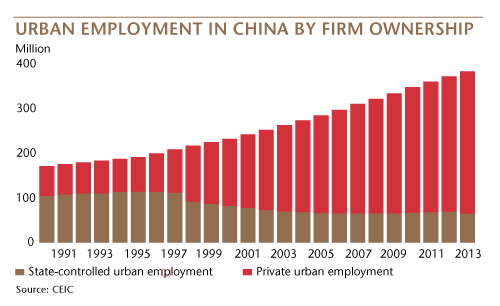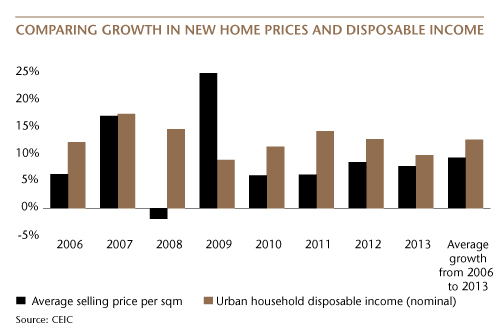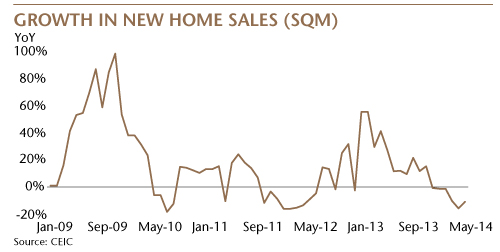Terms and Conditions of Use
Please read the following before proceeding, as it explains certain restrictions imposed by law on the distribution of this information and the countries in which Matthews Asia Funds are authorised for sale.
General Terms
The information on this website includes information about Matthews Asia Funds, which is an umbrella fund established as an open-ended investment company with variable capital incorporated with limited liability under the laws of Luxembourg. It qualifies and is authorised by the Commission de Surveillance du Secteur Financier as an undertaking for collective investment in transferable securities (UCITS).
Neither this website nor any documents contained in it constitutes investment advice or an offer or solicitation to sell or a solicitation of an offer to buy shares of the Matthews Asia Funds, or any investment product (nor shall any such shares or product be offered or sold to any person) in any jurisdiction in which an offer, solicitation, purchase or sale would be unlawful under the securities law of that jurisdiction.
By accessing this website you represent that you are permitted by the laws of your jurisdiction of residence to access this site and the information contained herein. In addition, if you are a resident of Singapore, you represent and confirm that you are a Financial Adviser's License Holder or an institutional investor as defined under Section 304 of the Singapore Securities and Futures Act.
Nothing contained within this website should be construed as investment advice. An investment in the Matthews Asia Funds may not be suitable for all investors and should only be made on the basis of the prospectus and simplified prospectus and their terms and conditions, and upon appropriate advice from your investment advisor. The Fund prices contained in this website are indicative only and should not be relied upon for dealing. No warranty or representation is made with respect to the information contained in this website, including, without limitation, that the information is accurate, complete or timely. The information contained in this website may be updated at any time. None of the information, whether in part or full, should be copied, reproduced or redistributed in any form nor should it be regarded as an offer or a solicitation of an offer for investment in countries in any jurisdiction in which such an offer or solicitation is not lawful.
Copyright
All copyright, patent, intellectual and other property rights in the information contained herein and on the content published on the website, such as (without limitation) pictures, drawings, videos, sounds, and or text, is owned by Matthews Asia Funds or its affiliates. No rights of any kind are licensed or assigned or shall otherwise pass to persons accessing such information.
Links
This website may have links to third party websites, which are not under the control of Matthews Asia Funds. Matthews Asia Funds will incur no liability for any content, service, product or material offered through any linked site. You access third party linked websites at your own risk.
Information and Privacy Policy
We respect your privacy and value the trust you place in us when you share your personal information with us. The way we may use your personal information is discussed in our official privacy policy notice which will inform you, in accordance with the provisions of the applicable Luxembourg data protection law, and, as of 25 May 2018, of the Regulation (EU) 2016/679 of the European Parliament and of the Council of 27 April 2016 on the protection of natural persons with regard to the processing of personal data and on the free movement of such data (the “Data Protection Law”), of the way Matthews Asia Funds, acting as data controller within the meaning of the Data Protection Law, collects, uses, stores and processes your personal data.
Having said that, we know you might have some additional questions about privacy on the Web.
First, we'll talk about privacy as it relates to using this website. Then, we'll cover the broader privacy issues concerning a fund investor's relationship with our company as a whole.
You confirm you have been informed of these terms by using this website and supplying us with your information. If you wish to discuss what information we hold about you or how we use it, you can contact us at Matthews Asia Funds 80, Route d'Esch, L-1470 Luxembourg or at privacy@matthewsasia.com.
Our Fund Privacy Notice
Matthews Asia Funds is committed to safeguarding information provided to us by individual investors of our Funds, and individuals visiting this website. This notice is designed to provide you with a summary of the non-public personal information we may collect and maintain about individuals visiting this website, current and former investors (the “Personal Data”); our policy regarding the use of that information; and the measures we take to safeguard the information. Matthews Asia Funds does not sell non-public personal information to anyone and only shares it as described in this Terms and Conditions of Use.
Personal Data We Collect
Email address. We collect your email address when you register for account access. Even if you're not registered for account access, we may need to ask for your email address (for example, if you ask to subscribe to our email newsletter).
Application form. When you invest in Matthews Asia Funds, you provide us with your Personal Data. We collect and use this information to service your accounts and respond to your requests. The Personal Data we collect falls into the following categories:
- Information we receive from you on applications or other forms, whether we receive the form in writing or electronically. For example, this information includes your name, address, tax identification number, birth date, investment selection, beneficiary information, and possibly your personal bank account information and/or email address if you are signing up for certain account options..
- Information about your transactions and account history with us, or with other companies that are part of Matthews Asia Funds, including transactions you request on our website. This category also includes your communications to us concerning your investments.
- Other general information that we may obtain about you such as demographic information.
How we use your Personal Data
Why we use your Personal Data. Matthews Asia Funds uses the Personal Data for the purpose of fulfilling the services required by the individuals visiting this website, current and former investors and complying with its legal obligations, such as:
- maintaining the register of investors;
- processing subscriptions, redemptions and conversions of shares and payments of dividends to investors;
- maintaining controls in respect of late trading and market timing practices;
- complying with applicable anti-money laundering rules; and marketing.
Disclosure. To better service your accounts and provide you with more choices, we may share your Personal Data with Matthews Asia Funds' data recipients (the “Recipients”), which include other Matthews entities, the distributors of Matthews Asia Funds, and financial service providers offering banking, trust, and custodial products and services.
We will only share Personal Data with outside parties in the limited circumstances permitted by the Data Protection Law. For example, this includes situations where we need to share information with Recipients who work on our behalf and upon our written instructions to service or maintain your account or process transactions you've requested, when the disclosure is to a party representing you, or when required by law (for example, in response to legal process).
Additionally, we will ensure that any Recipient assisting us in marketing our products and services, or with whom we have joint marketing agreements, are under contractual obligations to protect the confidentiality of your Personal Data and ensure its security, and to use it only to provide the services we've asked them to perform.
As part of a global organization, Matthews Asia Funds might share some of your Personal Data to Recipients that may be located outside the European Economic Area (the “EEA”) in countries that do not offer an adequate level of protection to personal data, especially: the United States of America, Hong Kong, Japan, and the Cayman. In such cases, said transfers shall be made on the basis of adequate contractual arrangements, which may take the form of the European Commission “Model Clauses”. A copy of such “Model Clauses” may be obtained by writing to the Fund at Matthews Asia Funds 80, Route d'Esch, L-1470 Luxembourg, or at privacy@matthewsasia.com.
The Recipients may, as the case may be, process Personal Data as data processor (when processing Personal Data upon our instructions, to assist Matthews Asia Funds in the context of the aforementioned purposes) or as distinct data controllers (when processing Personal Data for their own purposes).
Confidentiality and Security. Our employees are required to follow procedures with respect to maintaining the confidentiality of our investors' non-public personal information. Additionally, we maintain physical, electronic, and procedural safeguards to protect the information. This includes performing ongoing evaluations of our systems containing investor information and making changes when appropriate.
We will only share Personal Data with outside parties in the limited circumstances permitted by the Data Protection Law. For example, this includes situations where we need to share information with Recipients who work on our behalf and upon our written instructions to service or maintain your account or process transactions you've requested, when the disclosure is to a party representing you, or when required by law (for example, in response to legal process). Additionally, we will ensure that any Recipient assisting us in marketing our products and services, or with whom we have joint marketing agreements, are under contractual obligations to protect the confidentiality of your Personal Data and ensure its security, and to use it only to provide the services we've asked them to perform.
As part of a global organization, Matthews Asia Funds might share some of your Personal Data to Recipients that may be located outside the European Economic Area (the “EEA”) in countries that do not offer an adequate level of protection to personal data, especially: the United States of America, Hong Kong, Japan, and the Cayman. In such cases, said transfers shall be made on the basis of adequate contractual arrangements, which may take the form of the European Commission “Model Clauses”. A copy of such “Model Clauses” may be obtained by writing to the Fund at Matthews Asia Funds 80, Route d'Esch, L-1470 Luxembourg, or at privacy@matthewsasia.com.
The Recipients may, as the case may be, process Personal Data as data processor (when processing Personal Data upon our instructions, to assist Matthews Asia Funds in the context of the aforementioned purposes) or as distinct data controllers (when processing Personal Data for their own purposes).
Confidentiality and Security. Our employees are required to follow procedures with respect to maintaining the confidentiality of your Personal Data. Additionally, we maintain physical, electronic, and procedural safeguards to protect the Personal Data. This includes performing ongoing evaluations of our systems containing investor information and making changes when appropriate.
Cookies. A cookie is a small file placed on a computer's hard drive that allows a website to recognize that computer each time someone uses it to visit that site. Cookies are used to collect and process Personal Data to establish your preferences in using the website. Cookies may also be used to keep track of the pages looked at during a visit as well as the path taken to those pages.
Our website sometimes uses cookies to track how our visitors move through the site. We use this information to identify areas of the site that are of interest to investors or that can be improved.
Simply accepting cookies from our site does not compromise the security of your accounts. We don't display account information on this website.
Most web browsers are set up to automatically accept cookies. Users can, however, amend the configuration of the web browser on their computers so that they are systematically notified of any instance where the websites that they are about to visit contain cookies.
Timeliness of Content. All content on this website is presented only as of the date published or indicated, and may be superseded by subsequent market events or for other reasons. In addition, you are responsible for setting the cache settings on your browser to ensure you are receiving the most recent data.
Your rights. Under certain conditions set out by the Data Protection Law, you have the right:
- to access your Personal Data (i.e. the right to obtain from Matthews Asia Funds confirmation as to whether or not Personal Data are being processed, to be provided with certain information about Matthews Asia Funds's processing of the Personal Data, to access to that data, and to obtain a copy of the Personal data undergoing processing (subject to legal exceptions));
- to ask for a rectification thereof in cases where such Personal Data is inaccurate or incomplete (i.e. the right to require from Matthews Asia Funds that inaccurate or incomplete Personal Data be updated or corrected accordingly);
- to object to the processing of your Personal Data (i.e. the right to object, on grounds relating to your particular situation to processing of Personal Data which is based on the performance of a task carried out in the public interest or the legitimate interest of Matthews Asia Funds. Matthews Asia Funds shall stop such processing unless it can either demonstrate compelling legitimate grounds for the processing that override your interests, rights and freedoms or that it needs to process the data for the establishment, exercise or defence of legal claims);
- to ask for deletion of such data (i.e. the right to require that your Personal Data be erased in certain circumstances, including where it is no longer necessary for Matthews Asia Funds to process this data in relation to the purposes for which it collected or processed); and
- to ask for data portability (i.e. the right to have the data transferred to you or another data controller in a structured, commonly used and machine-readable format, where this is technically feasible).
You may exercise the rights thereto by contacting us in writing in this regard at the following address: Matthews Asia Funds 80, Route d'Esch, L-1470 Luxembourg or via email at privacy@matthewsasia.com.
You also have the right to lodge a complaint with the Luxembourg data protection Authority (the “CNPD”), or with any competent data protection supervisory authority in your country of residence.
Personal Data Storage. Personal Data shall not be held for longer than necessary with regard to the purpose of the data processing, subject to statutory periods of limitation.
Integration and Severability.
Miscellaneous.If any provision of these Terms and Conditions of Use is deemed unlawful, void, or for any reason unenforceable, then that provision will be deemed severable from these Terms of Use and will not affect the validity and enforceability of the remaining provisions. The preceding Terms and Conditions of Use represent the entire agreement between Matthews Asia Funds and the user relating to the subject matter herein.
Governing Law. This Terms and Conditions of Use and any non-contractual obligations arising out of, or in connection with this Terms and Conditions of Use shall be governed, construed and interpreted in all respects in accordance with the laws of the Grand Duchy of Luxembourg and each of the Parties agrees to submit any dispute arising from it to the courts of the city of Luxembourg.
General Risk Factors
- Past Performance is no guide to or guarantee of future returns. Please note that the price of shares and the income from them can fall as well as rise and you may not get back the amount originally invested. Income receivable may vary from the amount of income projected at the time of making the investment.
- Exchange rate fluctuations may affect the value of an investment and any income derived from it.
- If you exercise any right to redeem, you may not get back the amount initially invested if the share prices has fallen since you invested.
- There can be no guarantee that the tax position or proposed tax position prevailing at the time of the investment will not change.
- Dividends and capital gains on shares issued in Matthews Asia Funds may be subject to withholding taxes imposed by the countries in which each particular sub-fund invests.
The list of risk factors is not exhaustive and you should refer to the Simplified Prospectus and Prospectus for additional risk factors pertaining to that investment or relevant sub-fund.
Questions. Any queries regarding Matthews Asia Funds' privacy notice or its use of cookies should be directed to: Matthews Asia Funds, Investor Services, 80, Route d'Esch, L-1470 Luxembourg or via email at privacy@matthewsasia.com.



